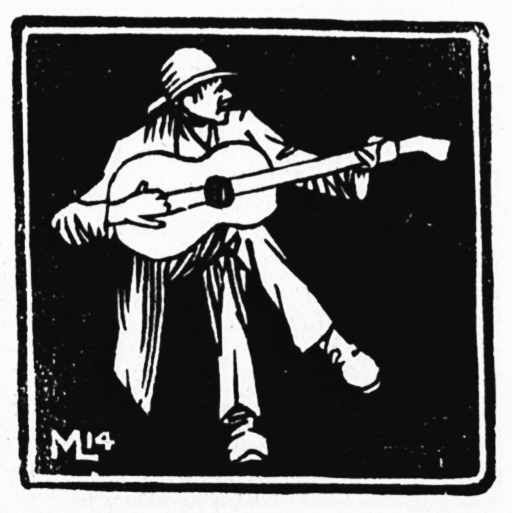

Ballade du petit bonheur
C’est bien en vain qu’on déblatère
Sur l’injustice du Destin.
Ce grand-maître du grand festin
N’a pas l’humeur égalitaire.
Mal servi, sache donc te taire :
Mais, tu peux toujours, bon jeûneur,
Te repaître… en lisant voltaire…
— Ce sont les miettes du Bonheur ?
Tel, qui pille le prolétaire,
Est pillé par quelque catin ;
Mais, que sa belle âme, un matin,
Plante-là son propriétaire,
On s’aperçoit, à l’inventaire,
Qu’il est ruiné, — même d’honneur…
Sa drôlesse en prend un ictère !
— Ce sont les miettes du Bonheur.
Que la foire parlementaire
Pour d’autres soit mine à butin !
— Va, quitte à passer pour crétin,
Fais ton nid, simple et solitaire.
Des besoins sois peu tributaire ;
Garde la foi du ramoneur
Et la sagesse alimentaire :
Ce sont les miettes du Bonheur.
Envoi :
Prince, à porter le diable en terre,
Trop tôt vient l’heure… où l’on en meurt.
Vivons donc, — de bon caractère…
Ce sont les miettes du bonheur.
Louis MOREAU.

Louis Moreau
Engraver
A serious or charming illustrator of daily labor, wanting to bring into the life of the humble a little hope and a bit of the ideal, Louis Moreau, with a big heart overflowing with kindness and justice, strives to stylize in a few sober notations the touching environment where the workers work and live.
He has chosen to express himself the least outdated process, wood engraving, which today seems to be enjoying a favor that it had lost since the 17th century.
He joins the tradition through a judicious use of blacks and whites, a skill too rare in our time. It is much less a question of making a black drawing by reserving a few white spaces, as Aubrey Beardsley did for example, or of drawing black on a white mass as with a brush, as we see in most moderns, but by a fortunately balanced whole to create a harmonious work.
The powerful and sober art of Louis Moreau achieves this with simplicity and in their attempts at stylization his works remind us neither of the Japanese, nor of the most famous among the moderns.
Here, there are a few chimneys springing from the dark masses and idealizing themselves in a tormented sky; he knew how to create the atmosphere of soot and smoke without attaching himself to conventional processes.
There, it is scaffolding which, through the sobriety of long black parallels, puts an elegant note in the brutal landscape of a street with thick modern houses.
His countrysides are tragic, under hallucinating skies. The wind shakes the trees of its landscapes and the plumes of smoke from its tall factory chimneys. At ground level, the man walks with his back bent, struggling through his interminable toil.
Never, in his portraits, does the concern for resemblance make him forget or neglect that of pictorial qualities; he wants any portrait to be a work in itself that must live outside of anecdote and time.
Louis Moreau’s portraits live and his entire work will live on.
ALCESTE.

Alceste, Louis Moreau Graveur,” L’Aquadémie no. 2 (Juin 1923): 52-55.
[Working translation by Shawn P. Wilbur]



























